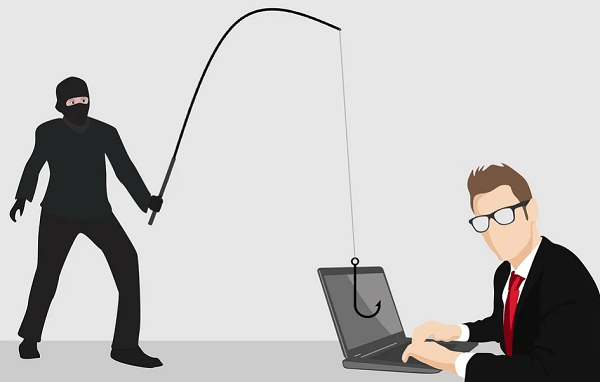
When it comes to staying safe online, using strong passwords is typically the first piece of advice. But, recognizing and avoiding online scams is just as important. After all, scams can cause financial loss, identity theft, and affect others you contact on your device. The good news is its possible to spot most scams, beating scammers at their own game.
1. Take a Survey
Thanks to major companies constantly tracking you online and selling data, scammers have an endless supply of ways to trick you into believing something’s real. For instance, the “take a survey” scam. It’s one of the more popular online scams as these surveys typically target a brand or company you’ve recently interacted with.

The premise is simple – you get a text, email, or pop-up asking you to share your thoughts. Usually, you’re offered a discount, cash, or a free product for your time. You enter your answers, fill out some personal data, and then you’re asked to pay for shipping or log in to your account to complete the survey.
If you’re ever asked to login to your account or pay money by a survey, it’s a scam. While companies may send you a survey, it’ll be easy to verify it’s from them. You can also contact the brand or company’s customer support if you’re uncertain.
2. Fake Wi-Fi Provider Sites
Since so many people use public Wi-Fi, scammers set up fake Wi-Fi hotspots that look like they’re from legitimate providers like Verizon or Spectrum. If your device is set to automatically connect, the hacker captures everything you do, including logins, financial data, and more. Some set up paywalled Wi-Fi, meaning they get your credit card number as soon as you pay to connect.

Always set your device to not automatically connect to available Wi-Fi, only trusted networks you choose. Also, only connect at businesses and locations that list their Wi-Fi network and password. It’s also a good idea to avoid doing anything personal or private on public Wi-Fi unless you have VPN installed.
3. Phishing Messages
Phishing still remains one of the most common online scams. While email used to be the most common form, messaging apps and social media are becoming more common too. No matter how you experience it, the goal is the same – either steal information and money or infect you with malware to steal information.

What makes phishing so effective is the messages often appear to come from friends, family, and trusted businesses. For example, I often get fake PayPal messages saying my account’s been limited. All I have to do is click the link in the email and login to verify it’s me.
You can spot this in several ways:
- Poor grammar
- Check the email/number for the sender
- Asking you to login or provide personal details
- Asking for money
- Using fear tactics (you owe money, possibility of jail, frozen accounts, etc.)
Always contact the source directly. Don’t respond to the suspicious message. If you’re getting phishing messages from a friend or relative, contact them directly (don’t respond to the message) to let them know. Odds are, their account has been hacked.
4. The Pop-Up
These pop-ups can appear whether you’re visiting a website or when your browser is closed. They either promise that you’ve won something or you’ve been infected with a virus. All you have to do is click the button and you get your prize or your system is cleaned.

Unless you’re expecting a pop-up about winning something, this is definitely a scam. Also, random pop-ups won’t let you know your computer’s infected or slow. Only rely on your anti-virus software to let you know about viruses. If you click on these pop-ups, you’re more than likely going to get a nasty piece of malware instead of anything good.
5. Fake Shopping Sites
These are some of the hardest online scams to spot and avoid. You visit what appears to be a legitimate site. In fact, there’s nothing wrong with the site itself, not even any viruses. However, when you make a purchase, nothing ever arrives. Customer support never responds and they’re always based out of your country, so you can’t get any help from local authorities.

Typically, these sites offer major discounts on expensive items. Or, they offer some amazing exclusive items that seem too good to be true. Often, you’re asked to pay using unusual options.
Once you’ve paid, the money is long gone. If you use a credit or debit card, the site may steal the details and sell them.
Always look for reviews on companies you’ve never shopped with before. Searching for “websitename scam” is a great start.
6. “Free” Trials
While free trials really do exist, many are just online scams. While everything’s spelled out in the fine print (which is how these scams continue unchecked), no one actually reads all the fine print.

It starts out as a free trial where you either have to pay a small shipping fee or provide payment details for when the trial ends. What you don’t notice is how much you’re going to be charged. Often, there isn’t even a way to cancel. You’re stuck unless you cancel the credit card you used. This is especially common on scam apps where people might not check statements and subscriptions for several months.
Always read the fine print. It’s boring and always way too long, but read it anyway.
You don’t have to let online scams run the Internet for you. Know what to look for and if anything seems suspicious, do your research before clicking, responding, or proceeding.










